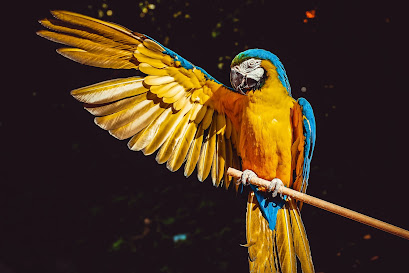During the COVID-19 pandemic, video calls became a lifeline for many people who were forced to isolate themselves from friends and family. From virtual happy hours to online family gatherings, video calls allowed people to stay connected and maintain a sense of social interaction.
However, it’s not just humans who benefit from video calls. It turns out that parrots may also benefit from this technology.
Parrots are highly social animals that thrive on social interaction and sensory stimulation. In the wild, parrots live in large flocks and engage in complex social behaviors, such as grooming and vocal communication.
However, in captivity, many parrots are deprived of social interaction, leading to boredom, stress, and even depression.
Some parrot owners have turned to video calls as a way to provide their feathered friends with much-needed social interaction.
By setting up a camera and a screen, owners can initiate video calls with other parrot owners, allowing their birds to see and hear other parrots in real time. This can help to stimulate their social behaviour and provide a sense of connection that was otherwise missing.
(Photo from Ilona Frey / unsplash)
But just how lonely can parrots get?
While the degree of loneliness experienced by individual parrots can vary, studies have shown that social isolation and lack of stimulation can have negative effects on parrot behavior and well-being. Some signs of loneliness in parrots include excessive screaming, feather plucking, and destructive behavior.
By using video calls to connect their parrots with other birds, owners may be able to alleviate some of these negative effects and provide their pets with a more fulfilling and enriched environment. While it may seem unusual to use video conferencing technology to connect with animals, it’s just one example of how technology can be used to improve the lives of our furry and feathered friends.
Why video calls are better than audio calls for parrots
(Photo from ben collins/unsplash)
Firstly, parrots are visual animals, and they rely heavily on visual cues to communicate with each other. This includes body language, facial expressions, and other visual cues that are difficult to convey over an audio call. By using video calls, parrot owners can provide a more realistic and engaging experience for their birds, allowing them to see and respond to familiar faces and surroundings.
In addition, video calls allow parrot owners to create a more immersive experience for their birds. This can include showing them videos of other birds or wildlife, or even live streaming from outdoor bird feeders or natural habitats. These experiences can help to stimulate and engage the parrots, providing them with a more enriching and satisfying experience than audio calls alone.
Secondly, the advantage of video calls is that they can help to reduce feelings of loneliness and isolation in parrots. Studies have shown that social isolation can have a negative impact on the mental health and well-being of parrots, leading to depression, anxiety, and other issues. By using video calls, parrot owners can provide their birds with a sense of connection and companionship, even when they can’t be together in person.
Finally, video calls can be a more practical option for parrot owners who live far away from their birds or have other commitments that prevent them from being together in person. By using video calls, they can stay connected and engaged with their birds, even when they can’t be there physically.
In conclusion, while audio calls can be helpful for keeping in touch with parrots, video calls offer several advantages that make them a better option.
How researchers helped them?
Researchers from the University of Veterinary Medicine in Vienna conducted a study to see if video calls could help alleviate the loneliness of parrots during the pandemic. The study involved 34 captive parrots of different species, all of whom were used to regular social interaction with their owners or caregivers.
During the study, the parrots were separated from their owners and caregivers for a period of two weeks. Half of the parrots were then given the opportunity to interact with their owners and caregivers through video calls, while the other half had no contact at all.
The results of the study were clear: parrots who had the opportunity to interact with their owners and caregivers through video calls showed a significant improvement in their behavior compared to parrots who had no contact at all. The parrots who had video calls were more active, vocal, and curious, indicating a positive response to the interaction.
The researchers noted that the video calls allowed the parrots to maintain a sense of social connectedness, even when physical contact was not possible. The parrots were able to hear and see their owners and caregivers, and even interact with them by vocalizing or performing behaviors.
The study shows the importance of social interaction for parrots, especially during times of isolation and social distancing. Video calls offer a simple but effective way for parrots to maintain their social connections and alleviate the effects of loneliness.
In conclusion, the COVID-19 pandemic has presented unique challenges for parrots and their owners or caregivers. However, researchers have shown that video calls can help parrots maintain their mental and emotional well-being, even during times of social distancing. As we continue to navigate the pandemic, it is important to consider the needs of all animals, including our feathered friends.




